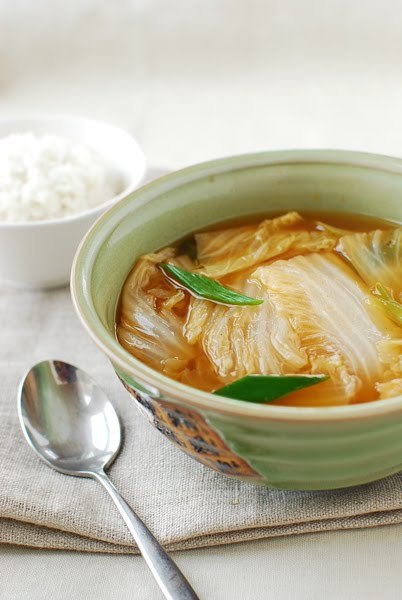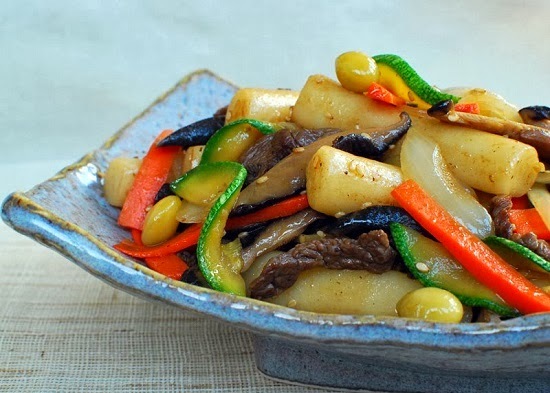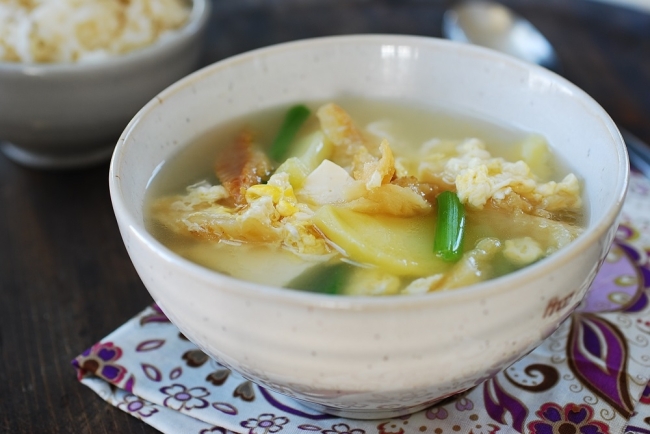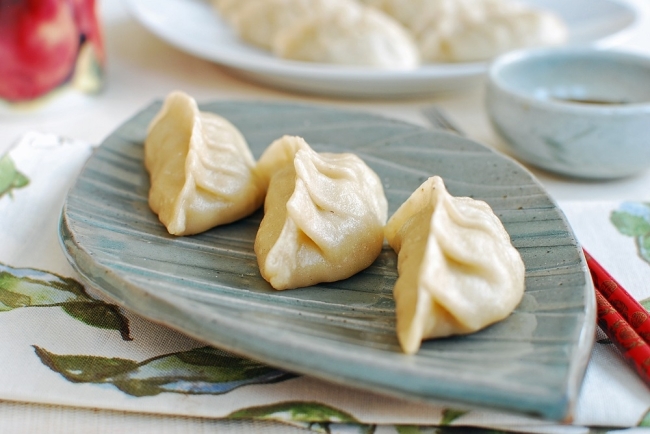 |
| Baechu doenjang guk (Napa cabbage doenjang soup) (Korean Bapsang) |
The doenjang-based soup made with baechu (Napa cabbage) is called baechu doenjang guk. Koreans cooking at home usually save the water used to rinse rice, ssalddeummul, and use it for this soup. The rice water adds starch to the soup and works as a binding agent between the doenjang and the broth, while enhancing the flavor of the doenjang. The hint of gochujang (red chili pepper paste) in this recipe also brings out the flavor of the doenjang without overpowering it. If you have this classic soup along with a bowl of rice and some kimchi, you’ll have a satisfying meal!
3 to 4 servings
Ingredients:
● 12 medium-size dried anchovies
● 1/4 head medium-size baechu (Napa cabbage) ― about 450 grams
● 2 tablespoons of doenjang (Korean soybean paste)
● 1 teaspoon of gochujang (Korean red chili pepper paste)
● 1 tablespoon of guk ganjang (soup soy sauce)
● 1 teaspoon of minced garlic
● 2 scallions, cut into 5-centimeter pieces
● Salt and pepper to taste
Make anchovy broth by boiling, uncovered, about 12 medium-size dried anchovies in 6 cups of water (or water used to rinse the rice) for 8 to 10 minutes. Fish out the anchovies and discard.
While the broth is being made, cut the cabbage into 5- to 7-centimeter pieces.
Stir the soybean paste and red pepper paste into the broth, or run them through a strainer in the broth. The latter process helps dissolve the pastes easier and catches any big chunks of beans remaining in the soybean paste. Add the soup soy sauce to the broth.
Add the cabbage pieces, cover and bring it to a boil. Reduce the heat to medium and cook until the cabbage becomes soft, 15 to 20 minutes. Stir in the scallions and garlic, and continue to cook for an additional 5 minutes. Add the salt, if necessary, and pepper to taste.






